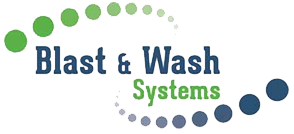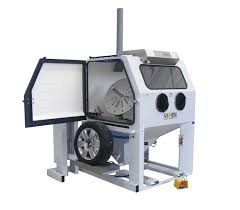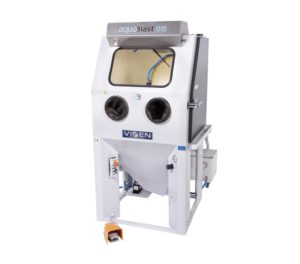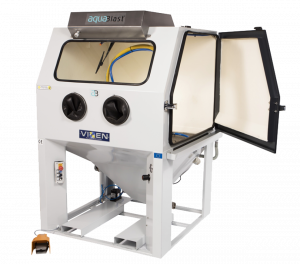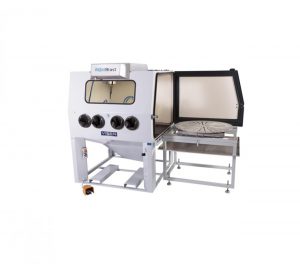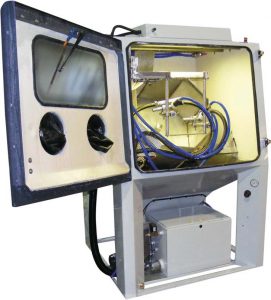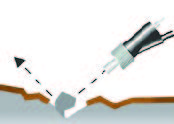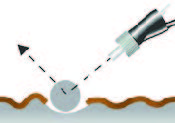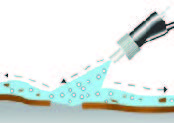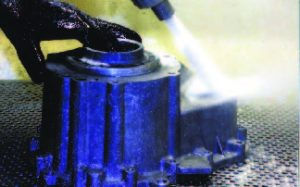Vixen is a market leader in the manufacturing of wetblasting machines
Aquablast Machines
Click on the images above to learn more!
For the ultimate finish, simultaneously blasts and degreases, scrubs and washes producing a perfect finish efficiently and economically.
The Principle of Wetblasting –
The key to wetblasting is that the finish is produced through flow of water borne abrasive. This creates a finer finish due to the lubrication and flushing action of the water during the blasting process. The illustrations above show the different processes of grit, bead and wetblasting.
How the Aquablast Works
General Operational Use
• The water/media slurry is contained within the cabinet sump
• Delivery of the slurry to the hand-held nozzle is via a glandless polyurethane pump and hoses within the machine
• Compressed air is added at the blast nozzle to accelerate the slurry onto the component and provide the finishing effect
• After contact with the component, the slurry then drains back into the pump and is recirculated
• Fine and broken down media and other contaminants are fed via an overflow into a sedimentation filter at the rear of the machine.
Advantages
Aquablast is particularly effective for:
• Cleaning of dies and moulds
• Removal of paint, rust, scale, carbon and similar deposits
• Surface preparation prior to bonding, re-painting and re-coating
• Satin finishing of stainless steels and other metals
• Cleaning of PCbs and electrical connectors
• Removal of small burrs from manufactured components
Advantages of Wetblasting:
• Dust-free process
• Cleans by flow and not by impact
• Simultaneously degreases and blasts
• Produces a ‘softer’ finish
• Water acts as a lubricant between media and component
• Promotes longer media life
• Avoids media impregnation on softer materials
